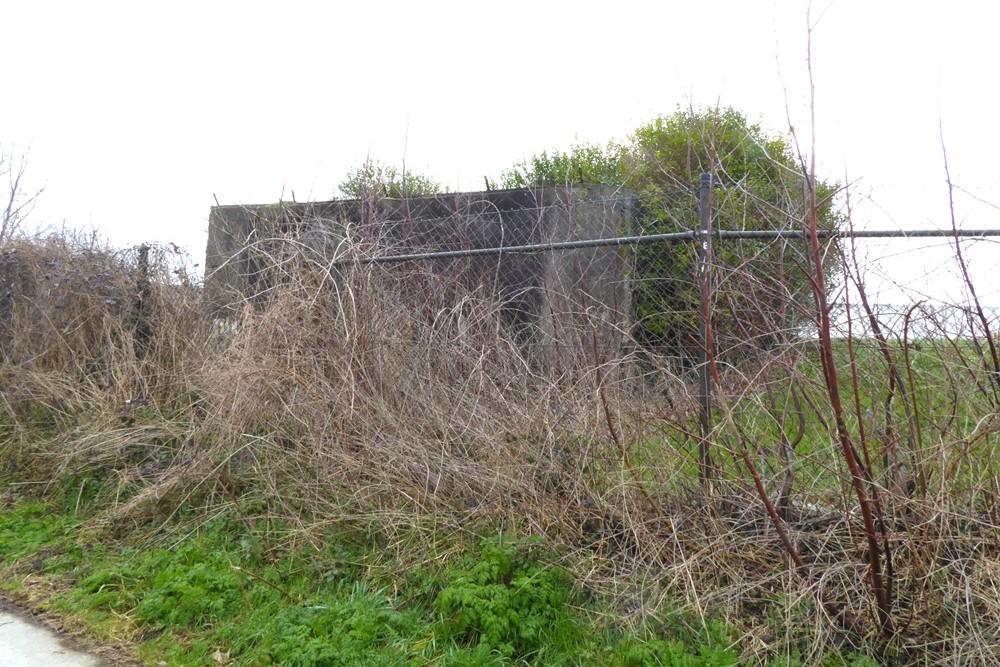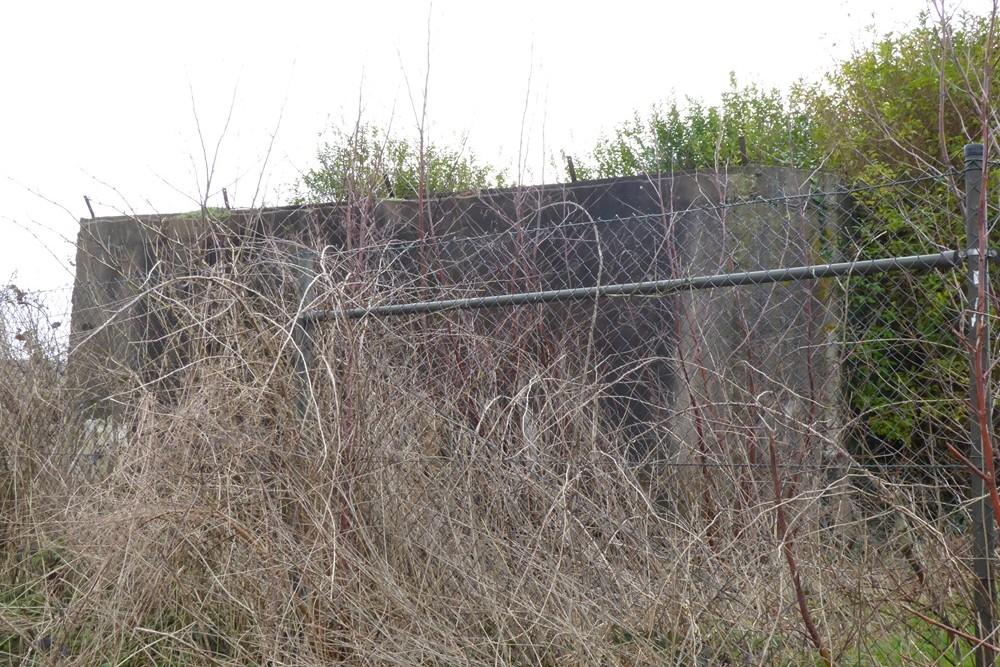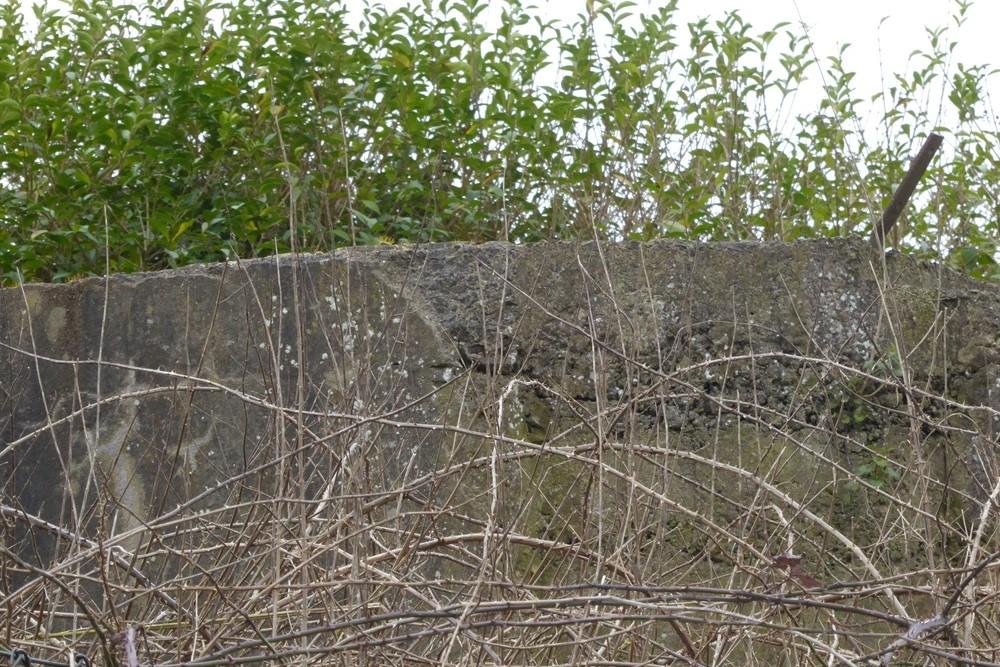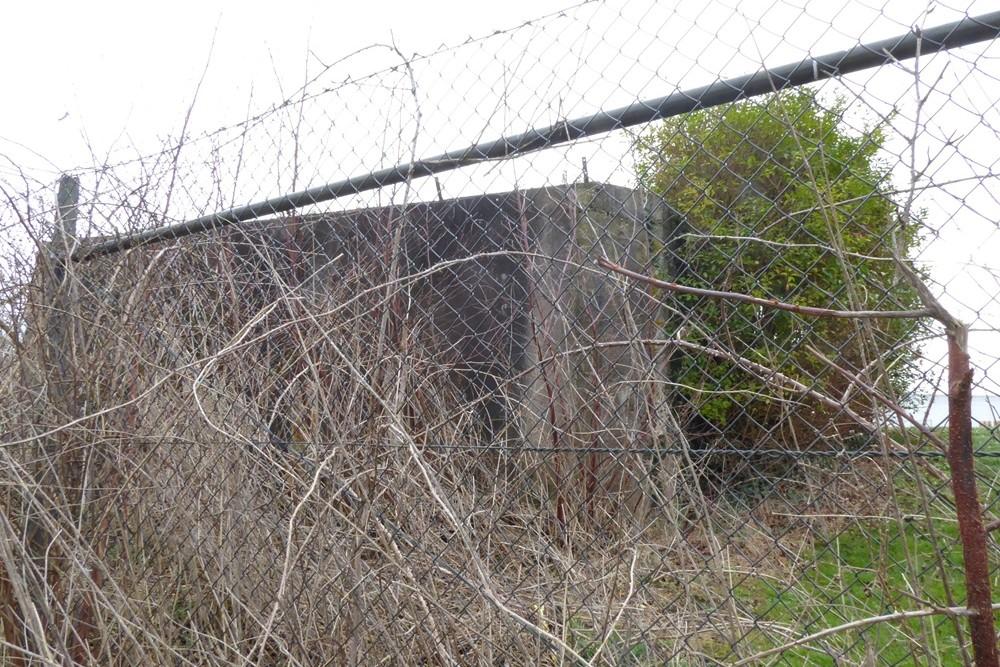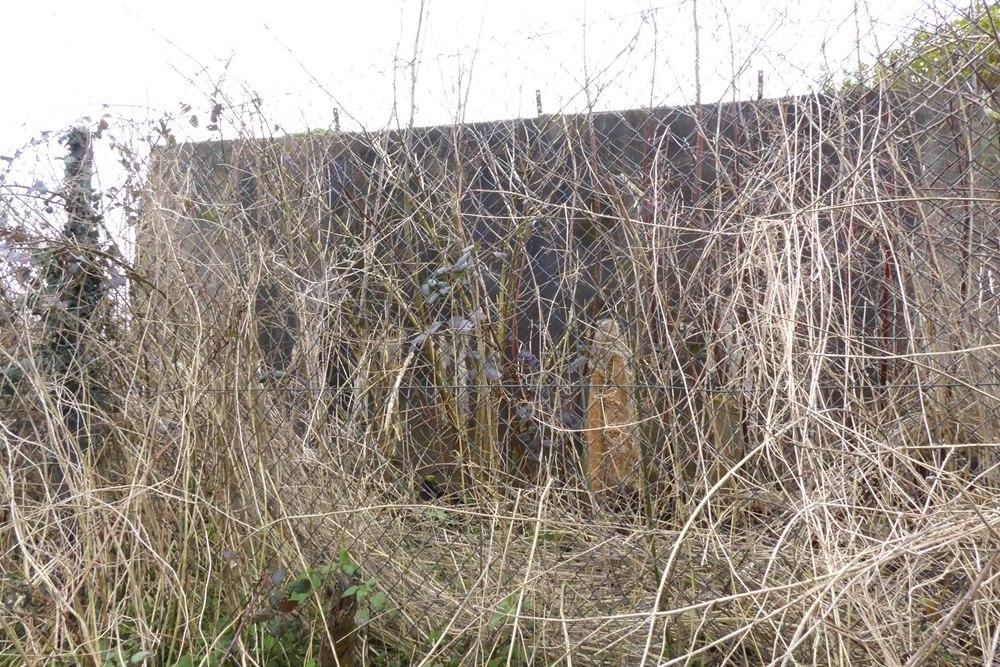Bunker Belt Bruggenhoofd Gent – Advanced Bunker AV16
Belgian bunker, part of the Ghent Bridgehead. This defensive position was constructed between 1934 and 1938, eight kilometres south of Ghent. Its construction was part of the fortification policy that Belgium pursued after the First World War.
The actual bridgehead consisted of two resistance nests – Betsberg and Muntekouter – and three strong points – Semmerzake, Eke and Astene.
The resistance nests and strong points were connected to each other by a curtain consisting of three defence lines.
There were 19 bunkers on the Wetteren territory, of which 8 have been demolished. Of the remaining ones, several are on private property or in the industrial zone.
AV16 was an advanced bunker on the front line between the Aalst-Ghent highway and the Scheldt, between AV15 (395 m) and A43 (110 m). It was positioned at an angle to bunker A43 right next to the highway. Their central view was directed towards the railway line.
The corners of the bunker were finished with brick and the whole was cemented.
It had a wooden saddle roof with red Boomse tiles as roof covering.
The view was that of a small house next to the railway line on a small piece of land, hidden between walnut trees, alder trees and a hedge.
The bunker had two rooms connected at the back and an airlock. The loopholes were hidden behind wooden shutters.
Each room was equipped as standard for the installation of Maxim machine guns, it was also possible to install Hotchkiss or Colt machine guns.
The bunker is located against the railway line in the green zone of a chemical company. It is partly visible from the cycle path next to the railway line.
Extensive information about this bunker belt can be found on the site Bunkergordel Bruggenhoofd Gent. It also contains photos, plans and technical data of the bunkers. A map shows the locations per municipality.
Do you have more information about this location? Inform us!
Source
- Text: TracesOfWar
- Photos: Marie-Christine Vinck
Nearby
Museum
Point of interest
- Institute Mariagaard Kwatrecht - Wetteren-Kwatrecht
- Halve Maanroute – information board 3, Battle of Gijzenzele - Gijzenzele
- College Paters Jozefieten - Melle (Merelbeke-Melle)
Monument
- Memorial 5th Line Regiment Kwatrecht - Wetteren
- Memorial 5th Line Regiment Kwatrecht - Wetteren-Kwatrecht
- Commemorative Plate War Victims Wetteren Ten Ede - Wetteren
Cemetery
- Belgian War Graves Wetteren-Kwatrecht - Wetteren-Kwatrecht
- Belgian Graves Veterans Massemen Cemetery - Massemen (Wetteren)
- Belgian War Graves Wetteren Ten Ede - Wetteren
Remembrance Stone
- Stumbling Stone Stationsstraat 30 - Wichelen
- Stumbling Stone Wettersestraat 25 - Wichelen
- Stumbling Stone Wanzelesteenweg 13 - Wichelen
